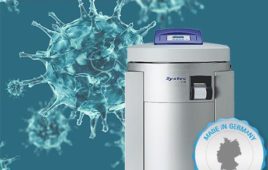Where were you when the MSDS was “born,” nearly 30 years ago? Since that time, particularly over the last decade, various regional or national regulatory agencies have undertaken the task of classifying chemical hazards, rendering those classifications not only more important but also more consistent with others worldwide. In some cases, these independently developed classifications may differ dangerously: surely describing the flammability hazard of isopropanol in India, for example, differently from the way it is described in the U.S. couldn’t make transfer of a medical procedure between those countries any easier or safer.
ENTER THE UN
In 1992, the United Nations designed the Globally Harmonized System of Classification and Labeling of Chemicals (GHS) to replace the various classification and labeling standards used in different countries by establishing consistent criteria for classification and labeling on a global level. They wrote that they expected it “should be available in the U.S. if feasible, by the year 2000.” But that didn’t happen until recently.
On March 20 of this year,1 the Department of Labor’s Occupational Health and Safety Administration (OSHA) released its long-in-the-making revised Hazard Communication Standard (HCS).2 The HCS embodied the GHS finally. It was an omnibus regulation, covering convergence of the following:
- Details of reporting exposure limits on safety data sheets (SDS), as discussed in this column (May 2012).
- Methodology by which chemical hazards are classified. 3 Still done by manufacturers, specific criteria applied to measured data4 must be used to address health and physical hazards as well as the classification of chemical mixtures. Note, this is required for all chemicals not those just brought to market. Every chemical must be reclassified by its manufacturer (or distributor). The three main elements of classification are physical, health, and environmental.
- Formats by which this information about hazards is communicated from suppliers to users to workers. The MSDS is no more, having been replaced by a Safety Data Sheet (SDS). The new format requires 16 specific sections.5
- Labels6 by which chemicals are identified must be used; each label must include a signal word, pictogram, hazard statement, and precautionary statement for each hazard class and category.
The new standard requires that workers be trained by December 1, 2013 on the new label elements and Safety Data Sheet format, in addition to the current training requirements.

AND YET…
Despite the political grandstanding at the announcement of the implementation of the GHS,7 and despite the highly desirable convergence of methodology by which information is conveyed, this action changes nothing significant.
Everyone knows that the number-one problem with hazard communication is that the various forms of communication media are as much marketing tools as they are informational tools for worker safety.
I have read the final rule8 in full and I have found nothing which prohibits use of the commonly found “NA” to fill in blanks in any informational form.
Furthermore, users must still deal with governmental complexity. As expected, this rule adopts only those sections of the GHS that are appropriate to OSHA’s regulatory sector.
- For example, while the GHS includes criteria on classifying chemicals for aquatic toxicity, these provisions were not adopted because OSHA does not have the regulatory authority to address environmental concerns. So sorry….
IT’S ALL GOOD
There is nothing harmful to workers or employers in this HCS. It all makes sense and is a desirable development because of the ever-increasing globalization of economic activity.
But users still didn’t get what they really needed: an HCS which contains all reliable information that characterizes hazards and addresses hazards to workers and the environment.
References
- OSHA published a Notice of Proposed Rulemaking to update the Hazard Communication Standard in September 2009 and held public hearings in March 2010.
- A Fact Sheet about the HCS can be downloaded from http://www.osha.gov/dsg/hazcom/HCSFactsheet.html
- The criteria for classification of health and environmental hazards were developed under the auspices of the Organization for Economic Cooperation and Development and the International Labor Organization. The ILO developed the hazard communication elements. OSHA participated in all of this work, and served as U.S. lead on classification of mixtures and hazard communication.
- It remains to be seen if manufacturers will continue to be able to complete these standardized and fulsome SDS forms by extending their use of the term “NA” about the availability of measured data when it suits their business interests to do so.
- See http://www.osha.gov/dsg/hazcom/ghs.html#b2.
- See http://www.osha.gov/dsg/hazcom/ghs.html#4.3.
- “This changes all that,” U.S. Labor Secretary Solis said, “this moves it from the right to know to the right to understand….”
- See http://www.osha.gov/dsg/hazcom/GHSfinal-rule.pdf
John Durkee is the author of the book Management of Industrial Cleaning Technology and Processes, published by Elsevier (ISBN 0- 0804-48887). In 2012, Elsevier will publish his landmark book The Science and Technology of Solvent Cleaning (ISBN 185617-4328). He is an independent consultant specializing in metal and critical cleaning. You can contact him at PO Box 847, Hunt, TX 78024 or 122 Ridge Road West, Hunt, TX 78024; 830-238-7610; Fax 612-677- 3170; or [email protected].



